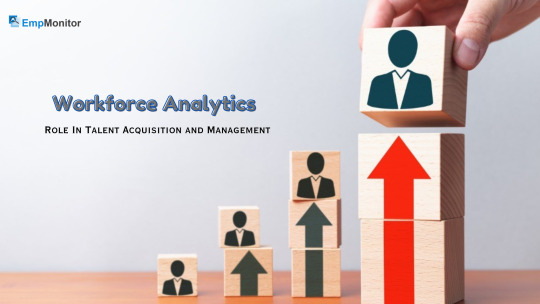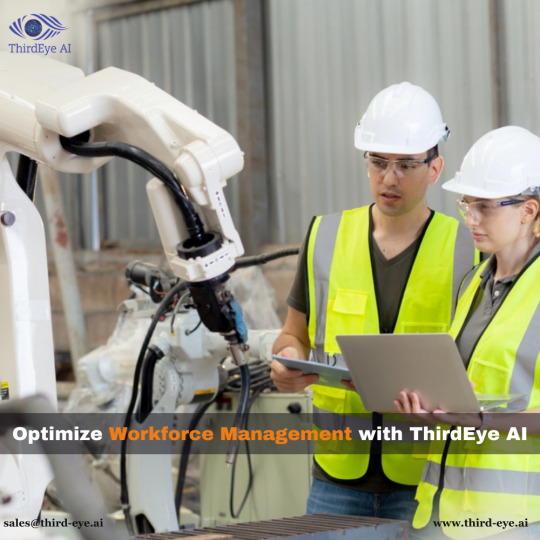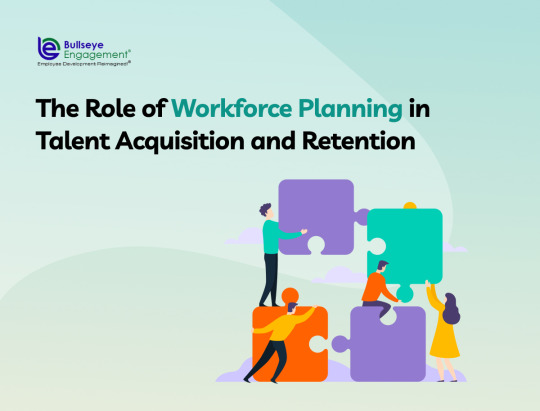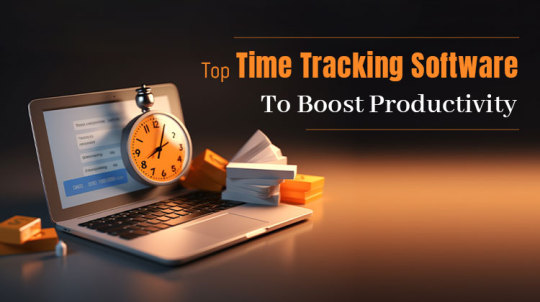#Workforce Planning software
Explore tagged Tumblr posts
Text
Workforce Planning Software
Bullseye Engagement’s Workforce Planning Software is a powerful, cloud-based solution designed to help organizations strategically align their talent with business objectives. In today’s fast-paced, data-driven world, simply tracking headcount isn’t enough—companies need actionable insights to anticipate future workforce needs, close skill gaps, and make smarter HR decisions. Bullseye’s software empowers HR leaders to forecast staffing requirements, model “what-if” scenarios, and identify talent risks before they impact operations. With intuitive dashboards, real-time analytics, and integration with performance and succession planning tools, the platform provides a holistic view of your workforce. It enables seamless collaboration between HR and business leaders to ensure that talent strategies are aligned with long-term goals. From workforce forecasting and skill gap analysis to succession planning and talent optimization, Bullseye Engagement’s Workforce Planning Software transforms reactive planning into a proactive, strategic function. Whether you're preparing for growth, restructuring, or digital transformation, Bullseye gives you the clarity and control needed to build a future-ready workforce. For more info visit us https://www.bullseyeengagement.com/workforce-planning-software.asp
0 notes
Text
How To Use Workforce Optimization Software To Build Resilient And Future-Ready Teams

In a rapidly evolving business landscape, the success of any organization depends heavily on the resilience and adaptability of its workforce. Companies are no longer just seeking efficiency—they’re striving to future-proof their teams. That’s where Workforce Optimization Software comes into play.
At Bullseye Engagement, we understand that building a high-performing, future-ready team requires more than just good hiring. It involves data-driven strategies, smart tools, and a continuous focus on improvement. Our advanced Workforce Optimization Software empowers organizations to proactively manage talent, increase agility, and ensure sustainable growth.
In this blog, we’ll dive deep into how your company can leverage workforce optimization solutions to create resilient, future-focused teams ready to meet tomorrow’s challenges.
What Is Workforce Optimization Software?
Workforce Optimization Software is a comprehensive suite of tools designed to maximize employee performance, streamline operations, and align workforce planning with business goals. It typically includes features such as:
Performance management
Scheduling and time tracking
Learning and development
Employee engagement analytics
Resource forecasting and planning
Bullseye Engagement’s solution stands out by integrating all of these capabilities into one intuitive platform—enabling companies to build not just better teams, but stronger futures.
Why Resilience Matters in the Modern Workforce
Workplace resilience refers to a team’s ability to recover from setbacks, adapt to change, and continue to perform under pressure. Resilient teams are not only more productive—they’re also more innovative and collaborative. In a post-pandemic world where remote work, market volatility, and evolving technologies are the new norm, resilience has become non-negotiable.
Future-ready organizations know that investing in technology to support this resilience is key. Workforce Optimization Software is the bridge between traditional workforce management and forward-thinking human capital strategy.
Key Ways Workforce Optimization Software Builds Resilient, Future-Ready Teams
1. Enhancing Visibility Into Workforce Data
With Bullseye Engagement’s Workforce Optimization Software, HR leaders and managers gain a centralized dashboard that provides real-time visibility into workforce performance, capacity, and engagement.
This allows decision-makers to spot trends, identify skill gaps, and take corrective actions before small issues turn into major setbacks. When teams are informed, they’re empowered—and that’s a core pillar of resilience.
2. Streamlining Performance Management
Resilient teams thrive on clarity. That means clear goals, consistent feedback, and well-defined expectations.
Our software streamlines the performance management process with goal-setting tools, progress tracking, 360-degree feedback, and automated review cycles. It enables employees to stay aligned with business objectives while receiving actionable input to grow.
A transparent performance process not only builds trust but ensures everyone remains focused and accountable—even in uncertain times.
3. Fostering Continuous Learning and Upskilling
The future belongs to agile learners. One of the most effective ways to future-proof your workforce is to create a culture of continuous development.
Bullseye Engagement’s platform includes robust learning and development modules that allow companies to deliver personalized training paths, track course completion, and monitor skill progression.
This empowers employees to stay competitive in their roles while preparing for internal advancement opportunities—turning today’s workers into tomorrow’s leaders.
4. Improving Collaboration and Communication
Disjointed communication can quickly derail a team, especially during high-stress or fast-changing situations.
Our Workforce Optimization Software includes tools for peer recognition, team communication, and goal collaboration, ensuring that teams remain connected and engaged—whether working on-site or remotely.
This builds a sense of unity and purpose, strengthening the social fabric of your workforce and enhancing its ability to bounce back from challenges.
5. Supporting Data-Driven Decision-Making
Making workforce decisions based on intuition alone is no longer enough. Today’s HR and operations leaders need data to support workforce planning, training investments, and headcount allocation.
With Bullseye Engagement, you get predictive analytics and powerful reporting features that turn data into strategy. These insights allow you to identify top performers, evaluate team dynamics, and anticipate workforce needs—before they arise.
When your decisions are backed by data, your organization becomes more agile, prepared, and proactive.
How to Implement Workforce Optimization Software Effectively
Adopting Workforce Optimization Software isn’t just about technology—it’s about transformation. Here’s how to make the most of your investment:
1. Define Clear Objectives
Before implementing the software, identify what you hope to achieve. Are you aiming to reduce turnover, improve productivity, or close skill gaps? Set measurable goals to track success.
2. Get Leadership Buy-In
A successful rollout starts at the top. Make sure leaders understand the benefits and are prepared to champion the platform’s use across departments.
3. Train Your Teams
Equip your HR, management, and employees with the knowledge they need to use the platform effectively. Bullseye Engagement offers onboarding support and continuous training to ensure adoption.
4. Monitor and Optimize
Once implemented, monitor platform usage and results. Use built-in analytics to see what’s working and what’s not, then continuously refine your approach.
Future-Proofing with Bullseye Engagement
At Bullseye Engagement, we believe that your people are your greatest asset. Our Workforce Optimization Software is designed to help organizations not only manage their teams but unlock their full potential.
Whether you're navigating remote work, preparing for expansion, or simply striving to build a better company culture, our platform gives you the tools to do so with confidence.
Final Thoughts
Building a resilient, future-ready team doesn’t happen by chance—it takes deliberate effort, the right strategies, and powerful tools. Workforce Optimization Software is more than just a management tool; it’s a foundation for long-term growth and adaptability.
With Bullseye Engagement, you gain more than software—you gain a strategic partner committed to helping you transform your workforce into a dynamic, empowered, and forward-thinking team.
The future of work is here. Is your team ready?
For more info Contact us : (888) 515-0099 or Email : [email protected]
#Workforce Planning software#Workforce Management Software#Workforce Planning System#Workforce Management Tools#Workforce Planning Platform#Workforce Optimization Software
0 notes
Text
Elevate Your Business with Cloud Workforce Management Software Services

Cloud Workforce Management Software Services provide businesses with a suite of tools to manage their workforce efficiently through a cloud-based platform. These services help streamline tasks such as employee scheduling, attendance tracking, payroll, and performance management, all accessible remotely, offering flexibility for both in-office and remote teams.
#cloud workforce management software services#best Cloud Based Workforce Management Software#best Workforce Management Software For Cloud usa#KPI Tracking and Strategic Planning#Kpi For Strategic Planning Performance#Kpi For Strategic Planning#Kpi Tracking Software For Business#strategic planning software for business kpi#business planning software cloud workforce services#usa
1 note
·
View note
Text
The Role of Workforce Analytics in Talent Acquisition and Management

The ability to effectively manage and develop talent is crucial for organizational success. It is where workforce planning comes into play. workforce planning analytics is a powerful tool that helps organizations understand and optimize their workforce by leveraging data and advanced analytical techniques. Here we go to explore workforce analytics, its role in talent acquisition and management, and how workforce planning and analytics can drive business success. We'll also discuss the importance of workforce management software in this process.
What is Workforce planning?
Workforce planning involves the use of statistical and analytical methods to understand workforce data and gain insights into employee performance, behavior, and trends. It encompasses a range of activities, from basic reporting and metrics to advanced predictive analytics. The primary goal of workforce planning is to provide actionable insights that help organizations make informed decisions about their workforce.
Components of workforce planning
Data Collection: Collect data from different seeds such as HR strategies, employee surveys, and performance reviews.
Data Analysis: Using statistical tools and techniques to analyze the collected data.
Reporting and Visualization: Presenting the analyzed data in a clear and understandable format through dashboards and reports.
Predictive Analytics: Using historical data to predict future trends and behaviors.
The Function of Workforce Planning Analytics in Talent Acquisition
Talent acquisition is the process of finding and hiring the right talent for an organization. Workforce planning analytics plays a crucial role in this process by providing insights that help organizations identify, attract, and retain top talent.

Identifying Talent Gaps
Workforce planning analytics helps organizations identify gaps in their current workforce. By analyzing data on employee skills, performance, and turnover rates, organizations can determine which areas need improvement and where there are growth opportunities.
Enhancing Recruitment Strategies
With workforce planning analytics, organizations can optimize their recruitment strategies. For example, by analyzing data on successful hires, organizations can identify the most effective recruitment channels, the best time to hire, and the characteristics of top-performing employees.
Improving Candidate Selection
Workforce research can also improve the candidate selection process. By analyzing data on past hires, organizations can develop predictive models that identify the characteristics of successful employees. It helps in screening candidates more effectively and making better hiring decisions.
The Role of Workforce Planning Analytics in Talent Management
Talent management involves developing and retaining employees to ensure they reach their full potential. Workforce planning is essential in this process as it provides insights into employee performance, engagement, and development needs.
Employee Engagement
Engaged employees are more effective and less likely to exit the institution. Workforce analysis can help measure employee engagement through surveys and other data sources. By analyzing this data, organizations can identify areas where engagement is low and develop strategies to improve it.
Learning and Development
Workforce analysis can identify the skills and competencies that employees need to develop. This information is crucial for designing training and development programs that help employees grow and succeed in their roles.

Workforce Planning and Analytics
Workforce planning and analytics involve the systematic identification and analysis of workforce data to ensure that an organization has the right people with the right skills in the right roles at the right time. This process is essential for long-term business success.
Strategic Workforce Planning
Strategic workforce planning involves forecasting future workforce needs based on business goals and objectives. Workforce planning analytics helps organizations predict future talent requirements and develop strategies to meet these needs. It includes identifying critical roles, assessing the availability of talent, and developing succession plans.
Operational Workforce Planning
Operational workforce planning focuses on the short-term needs of the organization. It involves analyzing current workforce data to identify immediate talent gaps and developing strategies to address these gaps. Workforce planning and analytics provide the data and insights needed to make informed decisions about hiring, training, and deployment.
The Importance of Workforce Management Software

Workforce management software is a critical tool for implementing workforce analysis. It provides the necessary infrastructure for collecting, analyzing, and reporting workforce data.
Data Integration: Integrates data from various sources, providing a comprehensive view of the workforce.
Analytics and Reporting: Offers advanced analytics and reporting capabilities to provide actionable insights.
Performance Tracking: Tracks employee performance and provides tools for performance management.
Engagement Surveys: Facilitates the collection and analysis of employee engagement data.
Predictive Analytics: Uses predictive models to forecast future trends and behaviors.
You Can Also Watch:
youtube
Wrapping Words
Workforce analytics is a powerful tool that plays a critical role in talent acquisition and management. By leveraging workforce planning and analytics, organizations can identify talent gaps, enhance recruitment strategies, and improve candidate selection. Workforce analysis also supports talent management by providing insights into performance, engagement, and development needs. With the help of workforce management software, organizations can effectively implement workforce analytics and drive business success.
#workforce analytics#workforce planning and analytics#workforce planning analytics#what is workforce analytics#workforce management software#Youtube
0 notes
Text
Workforce Planning & Analytics Software Solution with Third Eye AI

Experience unparalleled efficiency with Third Eye AI. Overcome workforce management challenges effortlessly. From tracking employee presence to monitoring machine availability, streamline operations with cutting-edge AI technology. With real-time insights and predictive analytics, optimize resource allocation and enhance productivity.
#workforce planning Software Solution#Workforce Planning & Analytics Software#WorkForce Planning#workforce planning Solution
0 notes
Text
Why Workforce Planning Is Critical For Small Businesses?

Why Workforce Planning Is Critical For Small Businesses don’t have a large base and operate with few employees. Losing an employee can have a significant impact on the organization. Hence, workforce planning shouldn’t be taken lightly.
1 note
·
View note
Text
A Guide to SAP HCM Online Training in India
#In the fast-evolving landscape of human resources management#businesses are constantly seeking efficient solutions to streamline their processes. This is where SAP HCM (Human Capital Management) comes#offering a comprehensive suite of tools to manage various HR functions. With the rise of online education#SAP HCM online training in India has emerged as a convenient and effective way to master this essential system.#Why Choose SAP HCM Online Training?#SAP HCM encompasses a range of critical HR processes such as payroll#talent management#workforce planning#and employee administration. Mastering these functionalities demands a thorough understanding of the software#and online training brings several advantages to the table.#1. Flexibility: Online training allows you to learn at your own pace#fitting seamlessly into your existing schedule. Whether you're a working professional or a student#you can access the course content when it's most convenient for you.#2. Cost-Effective: Traditional classroom training can be expensive due to travel and accommodation costs. With SAP HCM online training in I#you can save on these expenses while still receiving high-quality education.#3. Comprehensive Curriculum: Reputable online training providers offer comprehensive courses that cover all aspects of SAP HCM. From basic#you can gain a deep understanding of the system.#SAP HCM Online Training in India: What to Expect#India has become a hub for online education#and SAP HCM training is no exception. When enrolling in such a course#here's what you can expect:#1. Expert Trainers: Reputed online training platforms collaborate with industry experts to deliver high-quality instruction. You'll receive#2. Hands-on Experience: Practical exposure is crucial when learning SAP HCM. Look for courses that offer hands-on exercises and simulations#3. Certification: Many online courses provide certification upon completion#which can significantly enhance your resume and job prospects.#Conclusion#As businesses recognize the importance of effective HR management#proficiency in SAP HCM has become a valuable skill. With the convenience and flexibility of SAP HCM online training in India#aspiring HR professionals#existing HR personnel
2 notes
·
View notes
Text
In today's fast-paced business environment, the selection of the right workplace software can significantly impact an organization's productivity, efficiency, and overall success. "Planning for Success | Choosing the Right Workplace Software" is a comprehensive guide that highlights the critical importance of thoughtful planning and careful consideration when it comes to adopting new software solutions for the workplace. The guide begins by emphasizing the significance of aligning the software selection process with the organization's specific needs and objectives. It stresses the importance of involving key stakeholders from various departments, including IT, HR, finance, and operations, to ensure that all perspectives are considered and potential challenges are addressed. The planning phase involves a thorough assessment of the existing software infrastructure, identifying gaps, and determining the specific features and functionalities required to bridge those gaps effectively. It also examines the scalability of the chosen software to ensure that it can accommodate future growth and changing business requirements. The guide delves into the various types of workplace software available, such as project management tools, collaboration platforms, customer relationship management (CRM) systems, and communication applications. It provides valuable insights into the specific use cases and advantages of each type, empowering decision-makers to make informed choices based on their unique organizational needs. Furthermore, "Planning for Success | Choosing the Right Workplace Software" emphasizes the importance of considering factors beyond just features and costs. It explores the significance of compatibility with existing systems, user-friendliness, security features, and the availability of customer support and training resources. Another essential aspect covered in the guide is the need for trial periods and pilot tests before committing to full-scale implementation. This allows organizations to get hands-on experience with the software, evaluate its performance, and identify any potential roadblocks or challenges that may arise during the adoption process. Throughout the guide, real-world case studies and success stories are provided to illustrate the positive impact of thorough planning in the software selection process. Additionally, it highlights common pitfalls and mistakes to avoid, ensuring that decision-makers are well-prepared to make informed choices that align with their organization's long-term goals. In conclusion, "Planning for Success | Choosing the Right Workplace Software" serves as an invaluable resource for businesses and professionals seeking to optimize their operations through the adoption of suitable workplace software. By emphasizing the significance of meticulous planning and considering a range of factors, this guide equips readers with the knowledge and confidence to make informed decisions that pave the way for a successful and transformative software implementation.
#lanteria hr#hr software#transform your workplace#employee performance#employee relations#human resources#employee management#human resource management#company culture#work environment#workplace culture#employee wellbeing#workplace communication#workplace environment#work environment workplace culture#psychological safety at work#servant leadership#best hr software#hr system#workforce planning#planning for success#choosing the right workplace software
0 notes
Text
After nearly 15 years, Uber claims it’s finally turned an annual profit. Between 2014 and 2023, the company set over $31 billion on fire in its quest to drive taxi companies out of business and build a global monopoly. It failed on both fronts, but in the meantime it built an organization that can wield significant power over transportation — and that’s exactly how it got to last week’s milestone. Uber turned a net profit of nearly $1.9 billion in 2023, but what few of the headlines will tell you is that over $1.6 billion of it came from unrealized gains from its holdings in companies like Aurora and Didi. Basically, the value of those shares are up, so on paper it looks like Uber’s core business made a lot more money than it actually did. Whether the companies are really worth that much is another question entirely — but that doesn’t matter to Uber. At least it’s not using the much more deceptive “adjusted EBITDA” metric it spent years getting the media to treat as an accurate picture of its finances. Don’t be fooled into thinking the supposed innovation Uber was meant to deliver is finally bearing fruit. The profit it’s reporting is purely due to exploitative business practices where the worker and consumer are squeezed to serve investors — and technology is the tool to do it. This is the moment CEO Dara Khosrowshahi has been working toward for years, and the plan he’s trying to implement to cement the company’s position should have us all concerned about the future of how we get around and how we work.
[...]
Uber didn’t become a global player in transportation because it wielded technology to more efficiently deliver services to the public. The tens of billions of dollars it lost over the past decade went into undercutting taxis on price and drawing drivers to its service — including some taxi drivers — by promising good wages, only to cut them once the competition posed by taxis had been eroded and consumers had gotten used to turning to the Uber app instead of calling or hailing a cab. As transport analyst Hubert Horan outlined, for-hire rides are not a service that can take advantage of economies of scale like a software or logistics company, meaning just because you deliver more rides doesn’t mean the per-ride cost gets significantly cheaper. Uber actually created a less cost-efficient model because it forces drivers to use their own vehicles and buy their own insurance instead of having a fleet of similar vehicles covered by fleet insurance. Plus, it has a ton of costs your average taxi company doesn’t: a high-paid tech workforce, expensive headquarters scattered around the world, and outrageously compensated executive management like Khosrowshahi, just to name a few. How did Uber cut costs then? By systematically going after the workers that deliver its service. More recently, it took advantage of the cost-of-living crisis to keep them on board in the same way it exploited workers left behind by the financial crisis in the years after its initial launch. Its only real innovation is finding new ways to exploit labor.
387 notes
·
View notes
Text
On Thursday, Stephen Ehikian, the acting administrator of the General Services Administration, hosted his first all-hands meeting with GSA staff since his appointment to the position by President Donald Trump. The auditorium was packed, with hundreds of employees attending the meeting in person and thousands more tuning in online. While the tone of the live event remained polite, the chat that accompanied the live stream was a different story.
“‘My door is always open’ but we’ve been told we can’t go to the floor you work on?” wrote one employee, according to Google Meet chat logs for the event obtained by WIRED. Employees used their real names to ask questions, but WIRED has chosen not to include those names to protect the privacy of the staffers. “We don’t want an AI demo, we want answers to what is going on with [reductions in force],” wrote another, as over 100 GSA staffers added a “thumbs up” emoji to the post.
But an AI demo is what they got. During the meeting, Ehikian and other high-ranking members of the GSA team showed off GSAi, a chatbot tool built by employees at the Technology Transformation Services. In its current form, the bot is meant to help employees with mundane tasks like writing emails. But Musk’s so-called Department of Government Efficiency (DOGE) has been pushing for a more complex version that could eventually tap into government databases. Roughly 1,500 people have access to GSAi today, and by tomorrow, the bot will be deployed to more than 13,000 GSA employees, WIRED has learned.
Musk associates—including Ehikian and Thomas Shedd, a former Tesla engineer who now runs the Technology Transformation Services within GSA—have put AI at the heart of their agenda. Yesterday, GSA hosted a media roundtable to show its AI tool to reporters. “All information shared during this event is on deep background—attributable to a ‘GSA official familiar with the development of the AI tool,’” an invite read. (Reporters from Bloomberg, The Atlantic, and Fox were invited. WIRED was not.)
GSA was one of the first federal agencies Musk’s allies took over in late January, WIRED reported. Ehikian, who is married to a former employee of Elon Musk’s X, works alongside Shedd and Nicole Hollander, who slept in Twitter HQ as an unofficial member of Musk’s transition team at the company. Hollander is married to Steve Davis, who has taken a leading role at DOGE. More than 1,835 GSA employees have taken a deferred resignation offer since the leadership change, as DOGE continues its push to reportedly “right-size” the federal workforce. Employees who remain have been told to return to the office five days a week. Their credit cards—used for everything from paying for software tools to buying equipment for work—have a spending limit of $1.
Employees at the all-hands meeting—anxious to hear about whether more people will lose their jobs and why they’ve lost access to critical software tools—were not pleased. "We are very busy after losing people and this is not [an] efficient use of time,” one employee wrote. “Literally who cares about this,” wrote another.
“When there are great tools out there, GSA’s job is to procure them, not make mediocre replacements,” a colleague added.
“Did you use this AI to organize the [reduction in force]?” asked another federal worker.
“When will the Adobe Pro be given back to us?” said another. “This is a critical program that we use daily. Please give this back or at least a date it will be back.”
Employees also pushed back against the return-to-office mandate. “How does [return to office] increase collaboration when none of our clients, contractors, or people on our [integrated product teams] are going to be in the same office?” a GSA worker asked. “We’ll still be conducting all work over email or Google meetings.”
One employee asked Ehikian who the DOGE team at GSA actually is. “There is no DOGE team at GSA,” Ehikian responded, according to two employees with direct knowledge of the events. Employees, many of whom have seen DOGE staff at GSA, didn’t buy it. “Like we didn’t notice a bunch of young kids working behind a secure area on the 6th floor,” one employee told WIRED. Luke Farritor, a young former SpaceX intern who has worked at DOGE since the organization’s earliest days, was seen wearing sunglasses inside the GSA office in recent weeks, as was Ethan Shaotran, another young DOGE worker who recently served as president of the Harvard mountaineering club. A GSA employee described Shaotran as “grinning in a blazer and T-shirt.”
GSA did not immediately respond to a request for comment sent by WIRED.
During the meeting, Ehikian showed off a slide detailing GSA’s goals—right-sizing, streamline operations, deregulation, and IT innovation—alongside current cost-savings. “Overall costs avoided” were listed at $1.84 billion. The number of employees using generative AI tools built by GSA was listed at 1,383. The number of hours saved from automations was said to be 178,352. Ehikian also pointed out that the agency has canceled or reduced 35,354 credit cards used by government workers and terminated 683 leases. (WIRED cannot confirm any of these statistics. DOGE has been known to share misleading and inaccurate statistics regarding its cost saving efforts.)
“Any efficiency calculation needs a denominator,” a GSA employee wrote in the chat. “Cuts can reduce expenses, but they can also reduce the value delivered to the American public. How is that captured in the scorecard?”
In a slide titled “The Road Ahead,” Ehikian laid out his vision for the future. “Optmize federal real estate portfolio,” read one pillar. “Centralize procurement,” read another. Sub categories included “reduce compliance burden to increase competition,” “centralize our data to be accessible across teams,” and “Optimize GSA’s cloud and software spending.”
Online, employees seemed leery. “So, is Stephen going to restrict himself from working on any federal contracts after his term as GSA administrator, especially with regard to AI and IT software?” asked one employee in the chat. There was no answer.
12 notes
·
View notes
Text
Optimizing Organizational Performance with Sophisticated Strategic Workforce Planning Software Solutions

In the ever-evolving landscape of modern business, staying ahead of the competition requires a strategic approach that goes beyond traditional HR practices. Organizations today must harness the power of cutting-edge technology to ensure that their workforce is not just efficient, but strategically aligned with their business goals.
Enter "Strategic Workforce Planning Software," a sophisticated solution that has become indispensable in the pursuit of organizational excellence. BullseyeEngagement, a leader in this domain, offers a suite of solutions that are revolutionizing how businesses optimize their workforce and achieve peak performance.
Defining Strategic Workforce Planning Software
Strategic Workforce Planning Software, in its essence, is a comprehensive, data-driven solution that enables organizations to make informed decisions regarding their workforce. This software combines complex analytics, predictive modeling, and innovative data visualisation tools to help companies align their human resources with their strategic objectives.
It is a departure from traditional workforce management, which primarily focuses on routine HR tasks and day-to-day operations. Instead, it offers a strategic lens through which organizations can anticipate and adapt to future challenges.
The Challenges of Workforce Planning
Optimizing organizational performance is no small feat, especially in a rapidly changing business environment. The challenges are multifaceted, including talent shortages, skill gaps, changing demographics, and evolving market dynamics. Traditional workforce planning, often carried out manually or with basic software, can no longer address these complexities effectively. Herein lies the need for a sophisticated solution like BullseyeEngagement's Strategic Workforce Planning Software.
BullseyeEngagement's Solution: Unraveling the Complexity
BullseyeEngagement stands at the forefront of workforce planning innovation, offering a robust suite of solutions that empower organizations to confront the intricacies of their workforce with precision and foresight. By integrating advanced algorithms, machine learning, and data analytics, BullseyeEngagement's software enables businesses to unlock the full potential of their human capital.
Key Features of BullseyeEngagement's Strategic Workforce Planning Software
Data-Driven Decision Making
BullseyeEngagement's software harnesses the power of data, allowing organizations to make decisions based on factual insights rather than gut feelings. It collects and analyses an array of data, including workforce demographics, skills, performance metrics, and market trends, to provide a comprehensive view of the workforce landscape.
Predictive Modeling
With advanced predictive modeling capabilities, BullseyeEngagement's software helps organizations forecast future workforce needs. This feature is invaluable in anticipating skill gaps, employee turnover, and other critical factors that can impact organizational performance.
Scenario Planning
The ability to simulate various scenarios is a critical aspect of BullseyeEngagement's software. Businesses can model different workforce strategies to assess their impact on key performance indicators. This empowers organizations to make proactive adjustments to their workforce plans.
Strategic Alignment
BullseyeEngagement's software ensures that the workforce is in alignment with the organization's strategic objectives. It identifies areas where workforce capabilities need enhancement and suggests actions to bridge the gap.
Talent Development
The software provides insights into individual employee development needs and helps in designing targeted training and development programs. This ensures that employees are equipped with the skills necessary to contribute to the organization's success.
Cost Optimization
With the ability to analyse workforce costs and identify inefficiencies, BullseyeEngagement's software helps organizations optimize their labor expenses while maintaining performance standards.
The Benefits of BullseyeEngagement's Strategic Workforce Planning Software
By implementing BullseyeEngagement's software, organizations can unlock a multitude of benefits that are essential for optimizing their performance:
Competitive Advantage
The software equips organizations with a strategic edge, enabling them to adapt to market changes and anticipate future workforce needs, ultimately outperforming competitors.
Talent Retention
By identifying key employees and providing opportunities for growth and development, the software aids in retaining top talent, reducing turnover rates, and preserving institutional knowledge.
Resource Efficiency
Through optimised workforce planning, organizations can allocate resources efficiently, eliminating unnecessary costs and enhancing productivity.
Strategic Adaptability
The ability to model different scenarios and test various workforce strategies ensures that organizations can adapt swiftly to changing market conditions or unforeseen challenges.
Employee Engagement
Tailored training and development programs lead to a more engaged and motivated workforce, which, in turn, boosts productivity and overall performance.
Data-Driven HR
BullseyeEngagement's software promotes data-driven decision-making in HR, helping organizations realize the full potential of their human capital.
The Future of Workforce Planning
The business landscape is undergoing a paradigm shift, driven by digital transformation, artificial intelligence, and changing employee expectations. Traditional HR practices are no longer sufficient to meet the demands of this evolving environment. Strategic Workforce Planning Software, exemplified by BullseyeEngagement's solutions, is the bridge to the future of workforce management.
In this new era, organizations must not only manage their employees but strategically invest in them, aligning their capabilities with organizational objectives. This is where BullseyeEngagement's software excels, offering a comprehensive solution that leverages technology to enhance human resources.
Conclusion
Optimizing organizational performance is no longer a matter of mere operational efficiency but a strategic imperative. BullseyeEngagement's Strategic Workforce Planning Software is the linchpin that enables businesses to navigate the complexities of the modern workforce.
By offering data-driven insights, predictive modeling, and the ability to align the workforce with strategic goals, this software empowers organizations to unlock their full potential, making it an essential tool for the forward-thinking enterprise. As businesses embrace the future of workforce planning, BullseyeEngagement stands ready to lead the way with their innovative and sophisticated solutions.
By leveraging data, automation, and predictive analytics, organizations can optimize their workforce, cut costs, and achieve higher levels of operational excellence. The future of organizational excellence lies in strategic workforce planning, and BullseyeEngagement is at the forefront of this transformative journey.
#Workforce management software#Workforce optimization tools#Human resource planning software#Employee scheduling solutions
0 notes
Text
Top Time Tracking Software to Boost Productivity

Ever feel like there just aren't enough hours in the day? You're not alone. We all juggle overflowing to-do lists, and sometimes, it's hard to pinpoint where our precious time is going. Enter the magic of time tracking software.
These handy tools are like productivity superheroes, helping you understand how you spend your work hours and become a time management master. But with so many options out there, choosing the right one can feel overwhelming. Fear not, fellow warriors against the clock! This comprehensive guide unveils the top time tracking software to elevate your productivity and conquer your workday.
Clockify: The rockstar of all-around time tracking, Clockify offers a free plan with unlimited users and projects – perfect for individuals or small teams. It's easy to use, integrates with popular apps, and provides insightful reports to help you identify timewasters.
Quick Books Time: Calling all mobile warriors! Quick Books Time is a fantastic option for teams with a lot of on-the-go activity. Their mobile app is top-notch, making it a breeze to track time from anywhere. Plus, it integrates seamlessly with other QuickBooks products.
Time Camp: Freelancers, rejoice! Time Camp is built specifically for you, offering features like invoicing and automatic time tracking. It also boasts robust reporting tools, so you can show clients exactly how you're crushing their projects.
Deputy: Keeping track of employee hours can be a headache, especially when compliance comes into play. Deputy steps in as your guardian angel of employee time management software. It ensures you're adhering to labor laws and simplifies payroll processing.
IdioTime: Managing a small or large team!! Idiotime can help you manage your team effectively for workforce planning and resource management. With this employee time tracking application, you can easily boost your organization's productivity.
Toggl Track: Looking for a simple and free time tracking solution? Toggl Track might be your perfect match. Their free plan offers basic tracking features, making it a great option for individuals or small teams just starting out.
Tracking Time: Managing a small team can be tricky. Tracking Time comes to the rescue with its user-friendly interface and features designed specifically for collaborative time tracking. It's easy for teams to keep projects on track and identify areas for improvement.
Time Doctor: Need to keep your remote team accountable? Time Doctor offers a unique approach with features like website and application monitoring. It's important to use such tools with transparency and open communication, but they can be helpful for ensuring everyone's focused.
Rescue Time: Do you ever feel like you spend all day staring at your computer, but nothing gets done? Rescue Time is a productivity ninja in disguise. It automatically tracks your activity throughout the day and provides insightful reports on where your time goes. Identify those social media rabbit holes and reclaim your focus!
monday.com: This project management powerhouse also offers excellent time tracking features. It's a great option for teams who already use monday.com to keep everything organized in one central location.
Connecteam: This all-in-one solution caters specifically to the needs of mobile teams. It combines time tracking with features like scheduling, communication, and task management, making it a great choice for businesses with a highly mobile workforce.
The best time tracking software is the one that fits your specific needs and workflow. Consider factors like team size, budget, desired features, and mobile access. Don't be afraid to take advantage of free trials to see which software feels most intuitive for you. Remember, time tracking software is an investment in your productivity – and your sanity! So, take control of your time and watch your accomplishments soar.
--------------------------------------------------
Why is time tracking important for productivity?
It helps identify time-wasting activities, streamline workflows, and improve time management.
What are some popular time tracking software options?
Popular options include Clockify, Quick Books Time, Idiotime, Time Camp, Toggl Track etc.
What should I consider when choosing time tracking software?
Consider ease of use, features, cost, and compatibility with existing systems.
Is time tracking software secure?
Reputable time tracking tools use encryption and other security measures to protect data.
How can I ensure my data is secure when using time tracking software?
Choose a trusted provider, use strong passwords, and regularly update the software.
How does time tracking software benefit remote teams?
It helps monitor productivity, ensure accountability, and manage time effectively across different locations.
Is time tracking software scalable?
Yes, most time tracking tools can accommodate growing teams and increasing project complexity.
--------------------------------------------------
0 notes
Text
12 notes
·
View notes
Text
Workforce Analytics 101: Everything You Need To Know To Get Started

Feeling overwhelmed by the sheer amount of data mixing around your organization's workforce? You're not alone. But what if you could open the unknown hidden within that data? Workforce analytics is the key. It's like having a crystal ball for your human capital, giving you insights to improve everything from recruitment to retention, and boosting your bottom line in the process.
This comprehensive guide is your roadmap to becoming a data-driven hero. We'll break down the complex world of crew analytics into bite-sized pieces, so you can be up and running in no time. Imagine making strategic decisions based on hard facts, not hunches. Sound good? Let's dive in!
What is it?
Analytics of the workforce involves the use of statistical models, algorithms, and software to analyze employee data. The goal is to improve workforce performance, enhance employee engagement, and align HR strategies with business objectives. This field blends data science and human resources to provide actionable insights.
Key Components of Workforce Analytics:
Data Collection: Gathering data from various sources such as HR systems, employee surveys, and performance reviews.
Data Analysis: Using analytical tools and software to interpret the collected data.
Reporting and Visualization: Presenting data in an easily understandable format through dashboards, charts, and reports.
Predictive Modeling: Forecasting future trends and outcomes based on historical data.
The Importance of Workforce Planning and Analytics:
Workforce planning and analytics are crucial for anticipating future workforce needs and ensuring the right people are in the right roles. Its strategic approach helps in addressing talent gaps, optimizing labor costs, and enhancing overall organizational efficiency.
Benefits of Workforce Planning Analytics:

Here are the benefits of workforce planning analytics;
Talent Acquisition: Identifies the skills and roles required to achieve future business goals.
Employee Retention: Analyzes factors contributing to employee turnover and develops strategies to retain top talent.
Cost Management: Helps in optimizing labor costs by aligning workforce supply with demand.
Performance Enhancement: Provides insights into employee performance and identifies areas for improvement.
Getting Started with workforce planning and analytics:
Implementing analytics can seem daunting, but breaking it down into manageable steps can make the process smoother.
Step 1: Define Your Objectives
Begin by identifying what you want to achieve with these analytics. Common objectives include reducing turnover, improving employee engagement, and optimizing recruitment processes.
Step 2: Collect Relevant Data
Gather data from various sources within your organization. It can include HR databases, employee surveys, performance management systems, and more.
Step 3: Choose the Right Workforce Management Software
Investing in the right workforce management software is crucial. Look for features such as data integration, real-time analytics, and user-friendly dashboards. Popular options include:
Step 4: Analyze and Interpret Data
Use the software to analyze the collected data. Look for trends, patterns, and correlations that can provide insights into your workforce dynamics.
Step 5: Implement Insights
Develop actionable strategies based on your analysis. It could involve refining recruitment processes, developing targeted training programs, or adjusting compensation structures.
Step 6: Monitor and Adjust
Continuously monitor the impact of your strategies and adjust as needed. Analytics of the workforce is an ongoing process that requires regular updates and refinements.
Best Practices for workforce planning and analytic

To get the most out of crew analytics, consider the following best practices:
Ensure Data Quality: Accurate and complete data is essential for reliable insights.
Promote Data-Driven Culture: Encourage decision-making based on data rather than intuition.
Focus on Relevant Metrics: Concentrate on metrics that align with your business objectives.
Maintain Privacy and Security: Protect employee data to comply with regulations and maintain trust.
Continuous Learning: Stay updated with the latest trends and technologies in crew analytics.
The Future Analytics of Workforce
As technology advances, crew analytics expects to become even more integral to HR practices. Artificial intelligence and machine learning are set to play significant roles in predictive analytics, helping organizations to foresee and mitigate HR challenges proactively.
Emerging Trends
AI and Machine Learning: Enhancing predictive capabilities and automating routine HR tasks.
Employee Experience: Using analytics to improve the employee journey from recruitment to retirement.
Remote Workforce Management: Analyzing productivity and engagement in a remote or hybrid work environment.
Diversity and Inclusion: Leveraging analytics to promote a more diverse and inclusive workplace.
You Can Also Watch:
youtube
Conclusion
Workforce analytics is a transformative approach that can significantly enhance your organization's HR capabilities. By understanding what it is and following a structured approach to implementation, you can unlock valuable insights and drive strategic decision-making. Investing in the right workforce management software and adhering to best practices will ensure that you make the most of this powerful tool.
0 notes
Text
The Unity Technologies’ downward spiral continues as the company intends to cut 25% of its workforce — or roughly 1,800 people — in a move it called a “company reset.” It’s the game engine maker’s largest layoff, bigger than all three of last year’s cuts combined. More than 1,100 people were laid off in 2023, preceded by at least 200 layoffs in June 2022. Unity said in a United States Securities and Exchange Commission disclosure that the layoffs come as Unity “restructures and refocuses on its core business, and to position itself for long-term and profitable growth.” The layoffs will be completed by March, according to a Reuters report. Unity is known for its game engine software, which is used across the industry on games of all sizes — from indie games to AAA blockbusters. It serves as the foundation for games like Hearthstone, Marvel Snap, Apex Legends, and Among Us. Beyond video games, it’s also used in film and animation, among other industries. Despite it’s ubiquity in the industry, the company is not profitable: It earned more than $1.3 billion in revenue in 2022, but did not make a profit. The company’s large-scale layoffs began in 2022, but Unity’s problems became larger in 2023 when it announced a controversial new pricing model that was universally panned by game developers. The new runtime pricing was announced in September, with Unity proposing a fee collected per game install after a certain revenue threshold was met. Unity eventually pulled back on those plans after widespread backlash, including a boycott and a “credible death threat.” But the damage was done. Unity CEO John Riccitiello stepped down in October. James M. Whitehurst, an advisor at the Silver Lake equity investment firm and former IBM president, was named interim CEO.
45 notes
·
View notes
Text
Business for Sale in Germany: A Smart Move for Strategic Investors in 2025

Germany stands as Europe's economic engine, offering unmatched infrastructure, financial stability, and an innovation-driven economy. If you’re planning to expand your portfolio or relocate for business, looking into a business for sale in Germany could be the most strategic investment you make in 2025.
From small family-owned enterprises to scalable tech startups, Germany offers incredible diversity for global entrepreneurs.
Why Choose Germany for Business Acquisition?
1. Robust Economic Performance
Germany is Europe’s largest economy and the fourth-largest globally. It remains a world leader in manufacturing, automotive, logistics, and renewable energy.
2. Supportive Business Environment
Germany offers:
Access to EU markets
Strong intellectual property protection
World-class transport and logistics
Government funding for innovation and SMEs
3. Skilled Workforce
With a deep talent pool and strong vocational training systems, Germany makes it easy to hire competent, qualified employees.
Top Cities to Consider
Berlin: A startup magnet with creative and tech ecosystems
Munich: Finance, biotech, and advanced manufacturing hub
Hamburg: Logistics and port-based businesses
Stuttgart: Automotive and engineering excellence
Types of Businesses in Demand
Industrial suppliers and manufacturers
E-commerce and software firms
Automotive and transport services
Cafés and specialty restaurants
Green energy startups and consultancies
Explore listings for a business for sale in Germany that offer detailed revenue insights, asset breakdowns, and seller support.
Legal and Operational Considerations
Foreign Ownership: No citizenship requirement to buy a business
Taxation: Understand German VAT, corporate tax, and double taxation treaties
Licensing: Some sectors require industry-specific permits
Language: Consider hiring bilingual legal advisors
Frequently Asked Questions
Q: Can foreigners buy businesses in Germany? A: Yes, there are no restrictions on foreign ownership. However, you may need a visa or residency to operate it.
Q: Do I need to know German? A: While not mandatory, speaking German or hiring bilingual staff makes operations smoother.
Q: How long does the business transfer take? A: On average, 3–6 months, depending on due diligence and regulatory steps.
Q: Is financing available? A: Yes, local banks and international lenders offer financing options, especially for asset-backed purchases.
📌 Looking to step into one of Europe’s strongest economies? Begin your journey by exploring your ideal business for sale in Germany on World Businesses for sale.
🎥 Watch international investor success stories on our YouTube Channel to learn what’s working right now.
2 notes
·
View notes